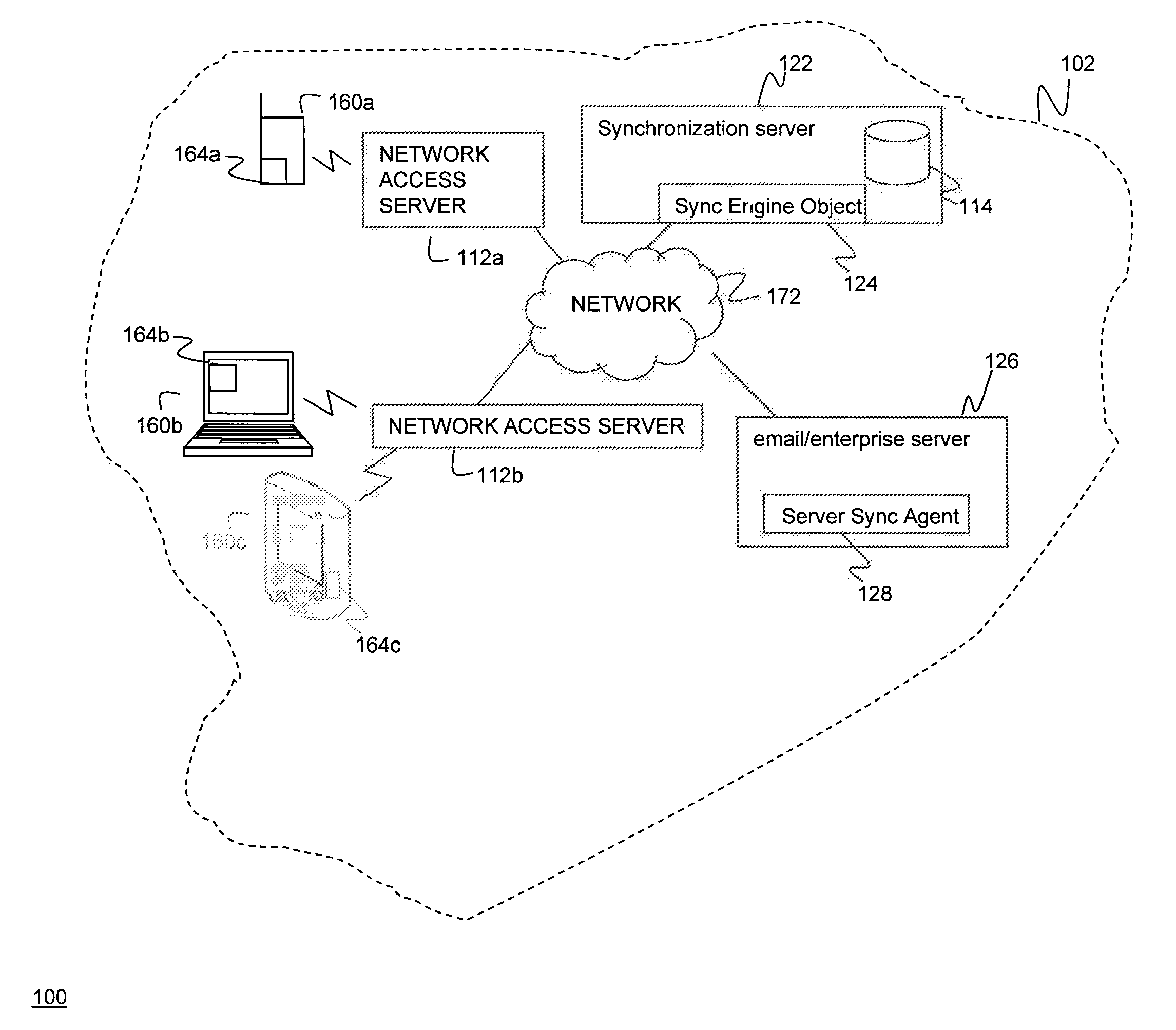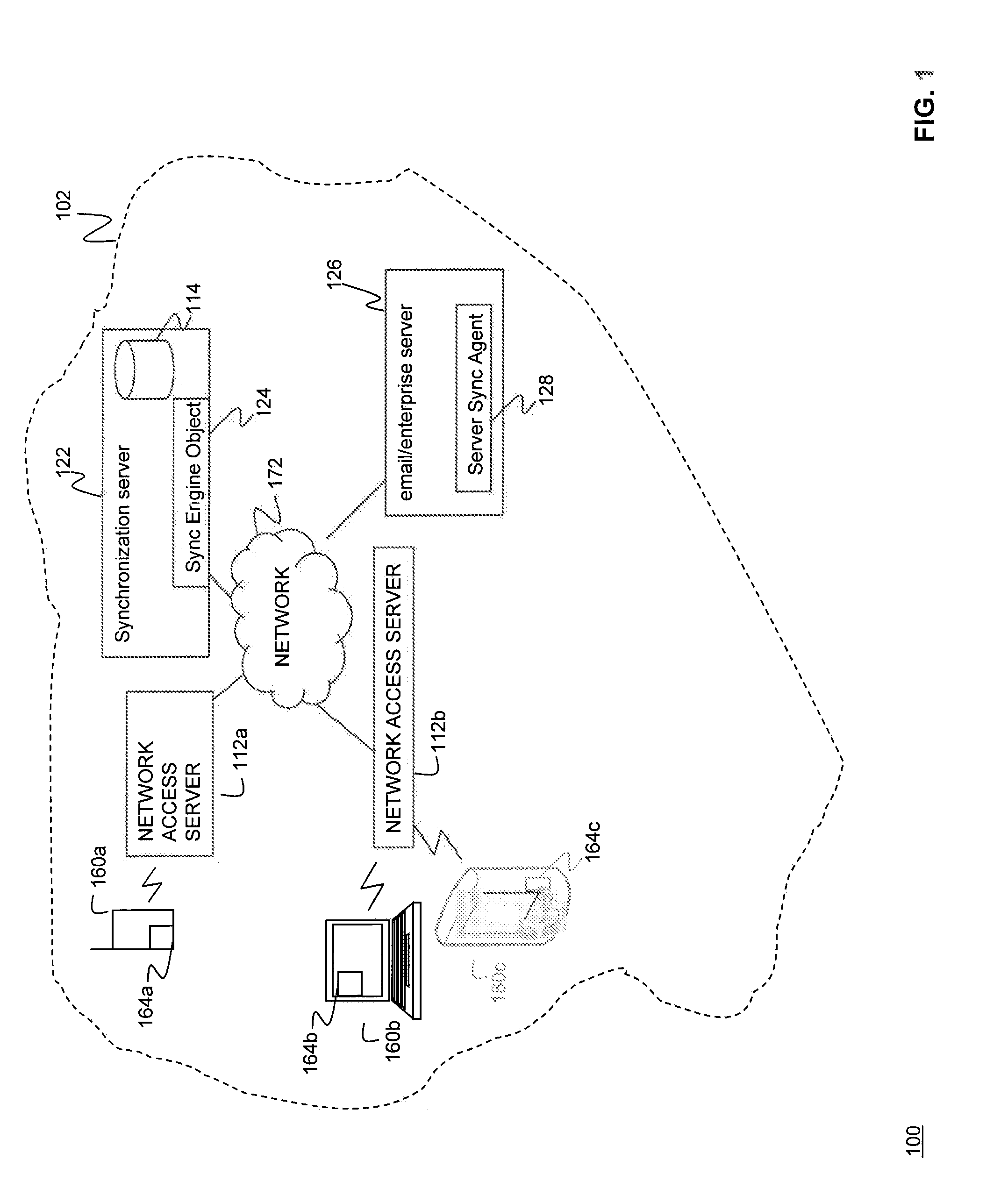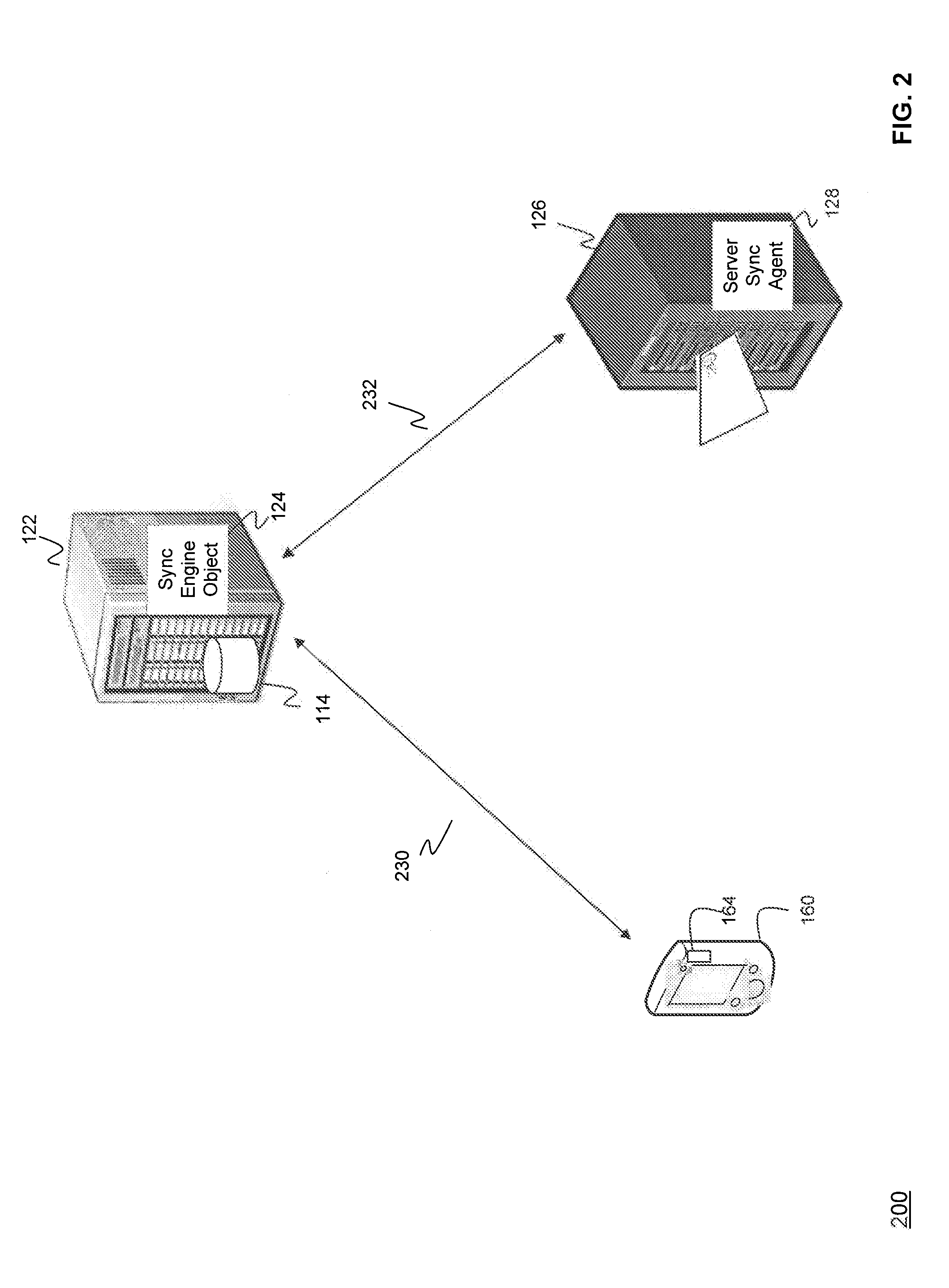Synchronizing Events Between Mobile Devices and Servers
a technology of mobile devices and servers, applied in the field of mobile communications, can solve problems such as potential security risks, inefficient storage of enterprise applications, pim data stores, and databases, and mobile devices typically have greater limitations on memory capacity, data storage capacity, networkability, and data storage capacity. to achieve the effect of facilitating the completion of business processes
- Summary
- Abstract
- Description
- Claims
- Application Information
AI Technical Summary
Benefits of technology
Problems solved by technology
Method used
Image
Examples
Embodiment Construction
I. Introduction
[0033]The present invention relates to systems, methods, and computer program products for synchronizing data objects, applications, and business processes, between mobile client devices and back end servers such as email servers, application servers, and database servers.
[0034]A data object is any textual, audio, graphical, video, or written work encoded in digital form and encapsulated in a computer readable structure, such as a file, message, computer readable medium, or shared memory object; that a software application program can access and manipulate. Unless specifically stated differently, a data object is interchangeably used herein to identify an email message, application data, a calendar entry (such as an appointment in a calendar application), a web services request, a method call, a database record, a data store record, and / or communications data. A method call is an invocation of a subroutine or Java applet. A method such as a subroutine or applet can co...
PUM
 Login to View More
Login to View More Abstract
Description
Claims
Application Information
 Login to View More
Login to View More - R&D
- Intellectual Property
- Life Sciences
- Materials
- Tech Scout
- Unparalleled Data Quality
- Higher Quality Content
- 60% Fewer Hallucinations
Browse by: Latest US Patents, China's latest patents, Technical Efficacy Thesaurus, Application Domain, Technology Topic, Popular Technical Reports.
© 2025 PatSnap. All rights reserved.Legal|Privacy policy|Modern Slavery Act Transparency Statement|Sitemap|About US| Contact US: help@patsnap.com



